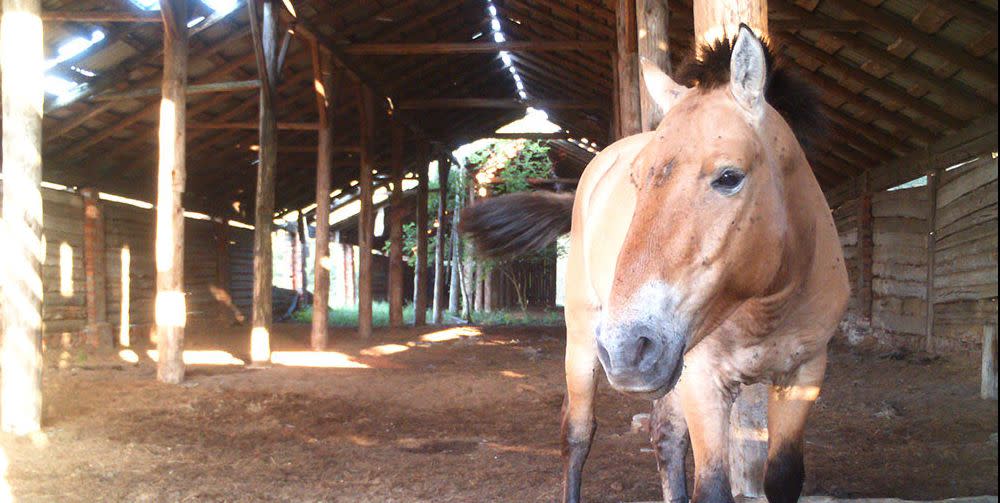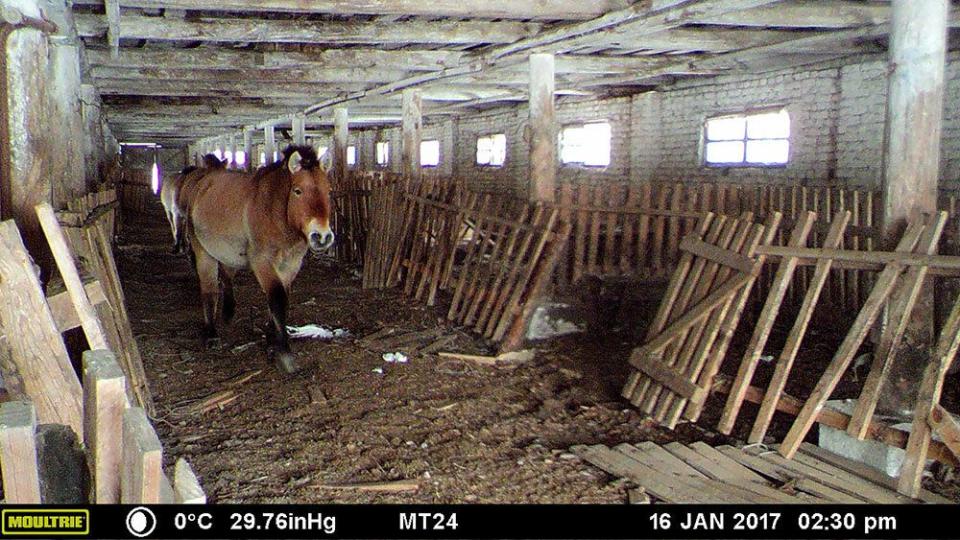The Last Truly Wild Horses Are Alive and Well in Chernobyl

Ever since the nuclear disaster of 1986, the Chernobyl Exclusion Zone has taken on a second life as an animal haven of sorts.
In 2004, a team of scientists began to introduce the endangered Przewalski's horse, the world's last truly wild equine species, into the zone.
Motion-sensor cameras have shown that the horses have begun to make a small comeback with help from the abandoned area's shelters.
The Chernobyl Exclusion Zone (CEZ) remains one of the world's most extraordinary locales for a number of reasons. Now, scientists want to add another.
Some of the zone's abandoned structures have turned into an impromptu sanctuary for endangered Przewalski's horses, the last wild equine species in the world.
Przewalski's (pronounced psuh-vahl-skeez) horses are a small, stocky species. They once roamed Europe, but are now mostly limited to Mongolia, China, and Kazakhstan after successful reintroductions. Around 15 years ago, however, scientists moved 36 horses to the CEZ, which crosses the Ukrainian-Belarusian border.
Within four years, the population almost doubled—impressive, but not enough to sustain an independent population. But the scientists involved with the new population, led by Peter Schlichting of Arizona State University, have recently discovered the horses are taking advantage of their new surroundings.

"When the size of a population is reduced, it has lost a lot of natural variation," Schlichting says in a press statement. "The goal of conservation programs is to maintain as much diversity as possible and prevent inbreeding, ensuring a population can withstand changes in the environment and survive long term."
Motion-activated cameras found that the horses are already using abandoned structures, particularly barns, as shelters.
"Our results indicate Przewalski's horses routinely use abandoned structures in the CEZ," says James Beasley, an associate professor at the University of Georgia, in the statement. "As a result, these structures can serve as important focal points for research and management to obtain key demographic information such as age, sex ratio, population size, and genetic structure."
The cameras tracked horse movement through both winter and summer seasons, finding horses 35 times at nine of 10 monitored structures during winter months and 149 times at all eight monitored structures during the summer. The horses seemed to enjoy their time in the structures, often spending more than five consecutive hours in them.
But the horses weren't alone in the structures. During the summer months, researchers found brown hare, red deer, moose, wild boar, red fox, raccoon dogs, Eurasian lynx, and wolves alongside them, as well as a number of birds and bats.
The CEZ's burgeoning reputation as an animal shelter is perhaps the least-expected result of the 1986 nuclear disaster that rocked the Soviet Union. Poor construction and under-trained workers inadvertently led to a catastrophe, which in turn forced over 116,000 people living near the Chernobyl plant to evacuate permanently.
As radiation levels in the CEZ lowered over the years and the political fortunes of the Soviet Union crumbled, the newly independent Ukrainian and Belarusian governments, as well as the rest of the world, began to wonder what to do with the area full of everything but people.
Meanwhile, animals returned to the land. A long-term study from 2015 showed that "regardless of potential radiation effects on individual animals, the Chernobyl Exclusion Zone supports an abundant mammal community after nearly three decades of chronic radiation exposures."
Further studies of the Przewalski's horses in the region could show with certainty how far, or not, the population has come since its introduction to the region. The study was done exclusively on the Belarusian side of the border, known as the Polesie State Radiation Ecological Reserve. The next step is to conduct more research on the Ukrainian side of the border, where the horses were first introduced.
You Might Also Like

